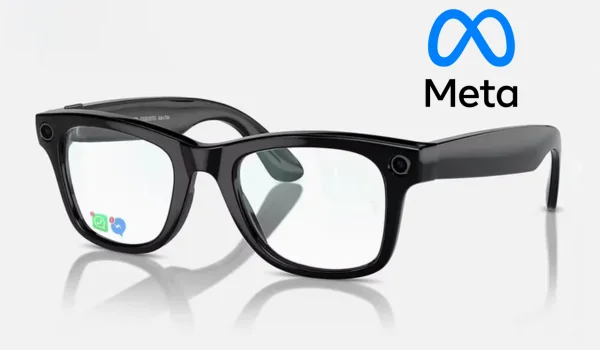Meta’s Big Leap: Affordable AR Glasses Arriving in September 2025
A Surprising Price Drop—What Changed?
Meta is gearing up to launch its first display-equipped smart glasses, internally codenamed Hypernova, in September 2025, with a starting price of approximately US $800. This is a significant reduction from earlier expectations exceeding US $1,000, with some estimates even reaching US $1,400.
Bloomberg’s Mark Gurman confirms that Meta has accepted lower profit margins to make the product more accessible and spur adoption among early users. This strategic pricing is seen as a bold move to democratize AR technology, despite the potential short-term financial trade-offs.
What’s Included—and What Costs Extra?
The $800 price tag is just the entry point. While it covers the base Hypernova glasses, designer frames and prescription lenses are expected to come at additional cost, potentially pushing the overall price much higher.
Features & Design: A Glimpse Into Floating Display and Neural Control

Monocular HUD and Wristband Control
The Hypernova glasses come equipped with a small monocular head-up display (HUD) embedded in one lens—most likely the right—to show time, weather, notifications, mini-apps, and turn-by-turn navigation.
What makes them unique is the inclusion of a neural wristband—a sEMG (surface electromyography) device—that tracks finger gestures. Reportedly, this wristband will be bundled with the glasses and serves as the primary means of interaction, such as navigating menus and responding to alerts.
Design Weight & Software Experience
Thanks to the HUD, the glasses weigh around 70 grams, compared to 50 grams for Meta’s Ray-Ban smart glasses without the display.
On the software side, Hypernova runs a customized version of Android. At launch, the device will support essentials like camera functions, maps, and notifications from Meta’s own apps (Messenger, WhatsApp). However, there won’t be a full-fledged app store—minimized complexity, more focus.
Strategic Vision: Stepping Stone to the AR Future
Bridging Consumer Tech with AR
Hypernova is positioned as a stepping-stone product: advanced enough to showcase Meta’s AR vision, yet simplified for consumer uptake. It paves the way for future, more immersive AR systems while keeping the present accessible.
Meta aims to differentiate by blending traditional eyewear with emerging display tech and next-gen neural interfaces—an evolution beyond standard Augmented Reality experiences.
Competing Market Dynamics
With this launch, Meta hopes to establish a stronghold in the growing smart-glasses category. In the first half of 2025, the global smart glasses market saw 110% year-on-year growth, with Meta’s Ray-Ban devices accounting for a remarkable 73% market share and 200% increase in shipments, aided by Luxottica’s manufacturing scale.
Still, competition is heating up, with players like Apple Vision Pro (priced at a steep US $3,499) offering high-end experiential hardware. Meta’s lower price point aims to attract mainstream users rather than niche VR/AR enthusiasts.
Timeline: When and Where to Expect Hypernova
Meta plans to unveil Hypernova at Meta Connect 2025, reportedly scheduled for mid-September (possibly around the 17th), with pre-orders expected to open in October.
This rapid timeline suggests Meta prioritizing its wearable future—ramping up efforts to ensure a timely debut alongside the announcement of pre-orders and further details.
Final Thoughts: A Calculated Gamble for AR Adoption
Meta’s decision to price Hypernova at around $800 is more than a marketing strategy—it’s a calculated investment in consumer acceptance of wearable AR. By lowering the entry barrier, Meta increases the likelihood of widespread adoption, even if margins are squeezed initially.
That said, the actual user cost could climb significantly with prescription lens, style upgrades, or accessory options. This raises questions about accessibility balance—offering basic AR to the masses while upsells cover richer experiences.
Ultimately, Hypernova may serve less as a finish line and more as an invitation—a first wave of AR adoption that sets the stage for more advanced, polished mixed-reality wearables in the years ahead.
